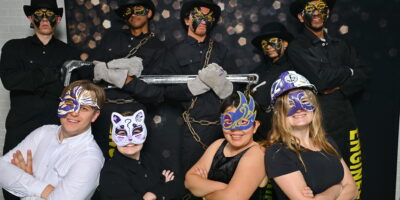Hello again engineering students! First off, I’d like to congratulate all of the fourth years that received their Iron Rings on Saturday. I’m sure it feels great after the last five years of assignments, labs, projects and exams.
The History of the Iron Ring
Due to the events of this past weekend, I thought it would be appropriate to talk a bit about the Iron Ring, what it symbolizes, and the Ceremony in which they’re given.
The Symbol
The Iron Ring is a Canadian tradition that originated in 1922. The Iron Ring is a symbol of the pride that engineers have in their profession, and it acts as a reminder of engineers’ obligation to live by a high standard of professional conduct. The Iron Ring is not, however, a symbol of qualification AS an engineer; this designation is determined by provincial licensing bodies.
The Ring
The Iron Ring itself is made from either wrought iron or stainless steel, and is given to graduating students at a ceremony held at each individual university. Because iron deteriorates over time (leaving the finger black and causing it to fit more loosely,) most camps of the Corporation of the Seven Wardens have moved to only using stainless steel rings.
There are still remnants of the old legend that the rings are made from the steel of a beam used in the first Quebec Bridge, which collapsed during construction in 1907. Seventy-five workers died in the collapse of the bridge, which was attributed to poor planning and design by the overseeing engineers.
The Ring itself is small and understated – designed for its symbolic nature, not as a piece of jewelry. It is worn on the little finger of the working hand.
The Ceremony
The Ritual of the Calling of an Engineer has a history dating back to 1922, when seven former presidents of the Engineering Institute of Canada met in Montréal along with other engineers. One of the speakers, Herbert E. T. Haultain, was a professor of civil engineering at the University of Toronto. Haultain believed that an organization was needed to bind members of the engineering profession in Canada more closely together. He also believed that an obligation, or statement of ethics, should be developed to which all engineering graduates should seek to uphold. The first ceremony awarding the Ring was held in 1925, under the supervision of Professor Haultain.
The Iron Ring Ceremonies are private affairs with no publicity. Invitations to attend are extended to local engineering alumni and professional engineers by those who are scheduled to participate. Some graduating engineers choose to receive a ring passed on from a relative or mentor, giving the ceremony a personal touch. Regardless of who gives the Ring to graduating students, it is a very momentous occasion.
The Stag
The Iron Ring Stag (IRS) is a Waterloo tradition and celebration that occurs for the graduating class every year on the evening following the Iron Ring Ceremony. It is the first opportunity for the newly-ringed students to touch the The Tool, the school’s engineering mascot. Only graduating students with their Iron Rings are allowed to attend these celebrations. The day before IRS, it is customary for the graduating classes to gather and celebrate “one day ‘till IRS”. You may have seen classes showing their spirit last week!
Congratulations again to all the fourth years on achieving this milestone.
Presidential Updates
As for updates on my portfolio, the last two weeks have not been as busy as the first few of the term, but progress is being made. As I mentioned in the last issue, I am part of the Orientation Working Group that was created to re-vision Orientation Week. Since the last issue, the working group has met twice (two full days,) to start designing the week’s events. We reviewed key elements and images from the first two phases, along with the Orientation missions and guiding principles. By the end of the first day, we had developed five key themes on which to focus: programming, authentic support, communication, resource use, as well as tools and measures. On the second day, we brainstormed around each focus and created a plan for action, identifying key deadlines. The final phase of this process is the ongoing operationalizing of the plan. While a lot of work was done during these meetings, there is still much more to be done. The Orientation Advisory team is currently working extremely hard with the FOC teams to start to get things ready.
If you have any questions or just want to chat, send me an email at president.a@engsoc.uwaterloo.ca or stop by the Orifice (CPH 1327). Good luck on midterms!




Leave a Reply